We left Seward last night, and after experiencing calm seas in Resurrection Sound, we entered the Gulf of Alaska for a rough night. Despite the turbulent conditions, we slept through most of it and woke up the next morning in Prince William Sound. What a way to wake up!
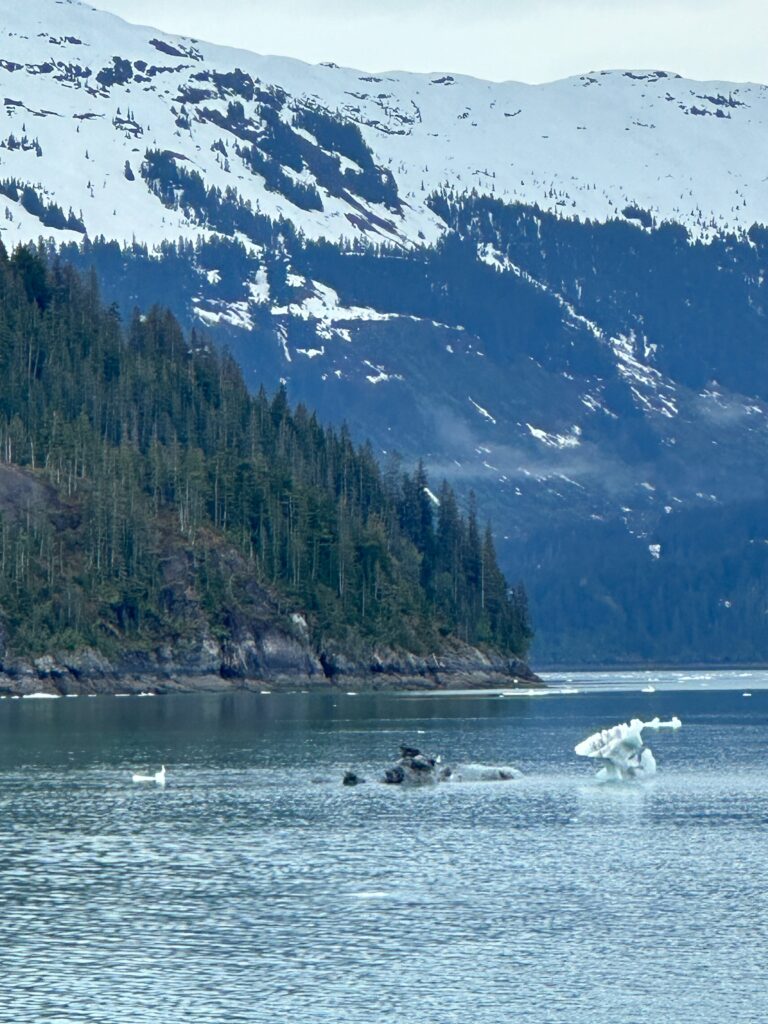
We slowly made our way to College Fjord.

College Fjord is a stunning fjord located in the northern sector of Prince William Sound, Alaska. It contains five tidewater glaciers (glaciers that terminate in water), five large valley glaciers, and dozens of smaller glaciers. The glaciers were named after renowned East Coast colleges during the 1899 Harriman Expedition, with women’s colleges on the northwest side and men’s colleges on the southeast side. This was the first time white people saw the glaciers and named them, of course separating the sexes and giving Harvard to the largest.
Notable Glaciers
• Harvard Glacier: The largest glacier in College Fjord, measuring 1.5 miles wide and around 300 feet thick. It is slowly advancing and calving tons of ice into the fjord daily.
• Yale Glacier: Another prominent tidewater glacier originating from the same snowfield as Harvard but retreating over the last century.
• Columbia Glacier: The largest and second-fastest moving glacier in the world, traveling about 80 feet per day and discharging 2 cubic miles of ice annually.
• Other glaciers named after colleges include Amherst, Barnard, Bryn Mawr, Smith, Vassar, and Williams.
Unique Features
• College Fjord is the only spot in Alaska with three neighboring slopes containing glaciers, five of which end at the water.
• At one point, visitors can see eight glaciers simultaneously.
• Factors like fjord depth, buoyancy, ice thickness, and calving rates influence tidewater glacier positions more than climate change.
• The fjord offers incredible opportunities to witness calving glaciers and abundant wildlife like whales, seals, sea otters, bears, and birds.
Seeing this up close was truly remarkable. Our ship came within 350 yards of the glaciers’ faces. It felt as if we could reach out and touch them. The glaciers were dynamic, constantly moving and emitting groans, crackling sounds, and occasional claps or long roars of thunder. The energy was electric.
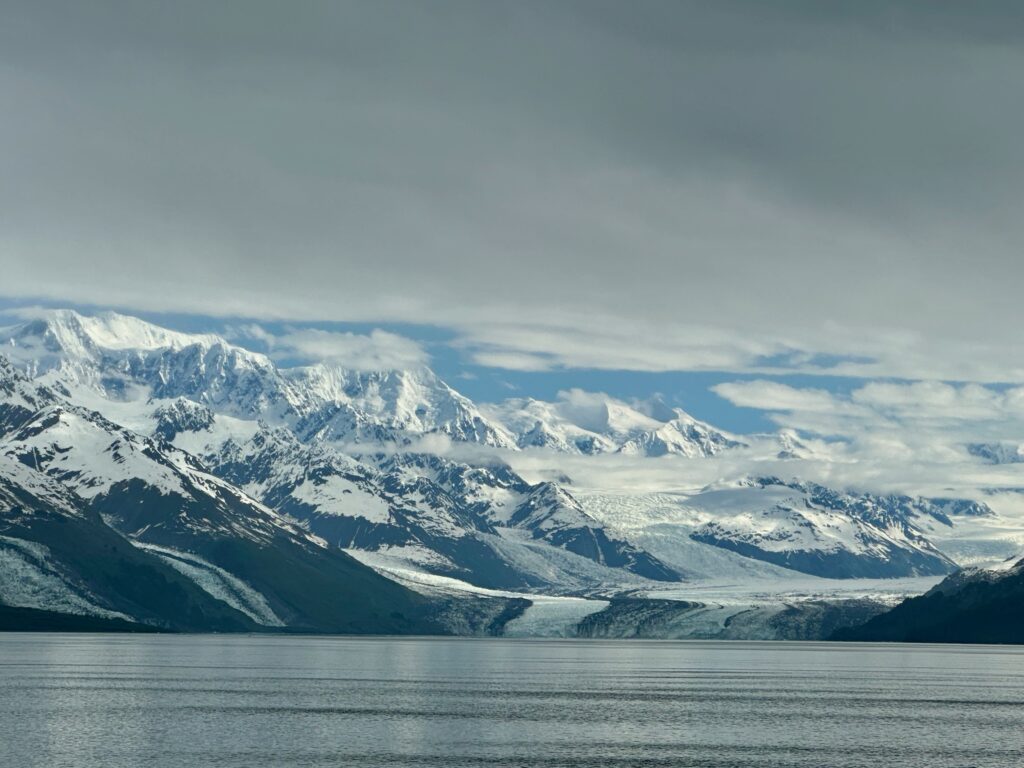
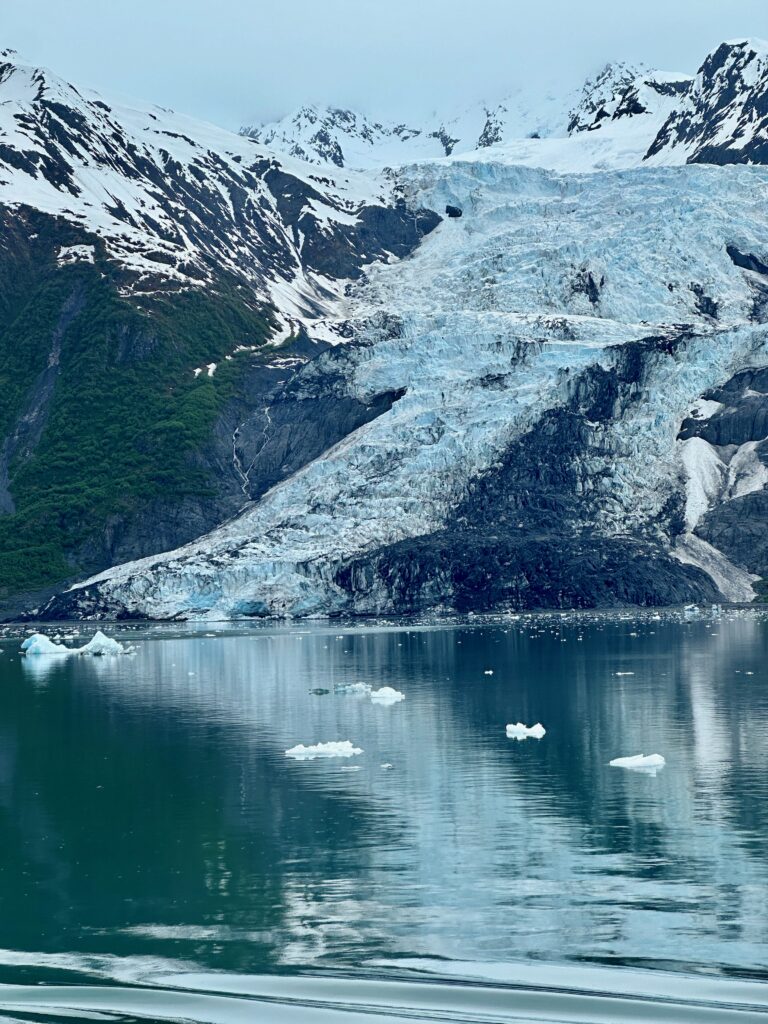
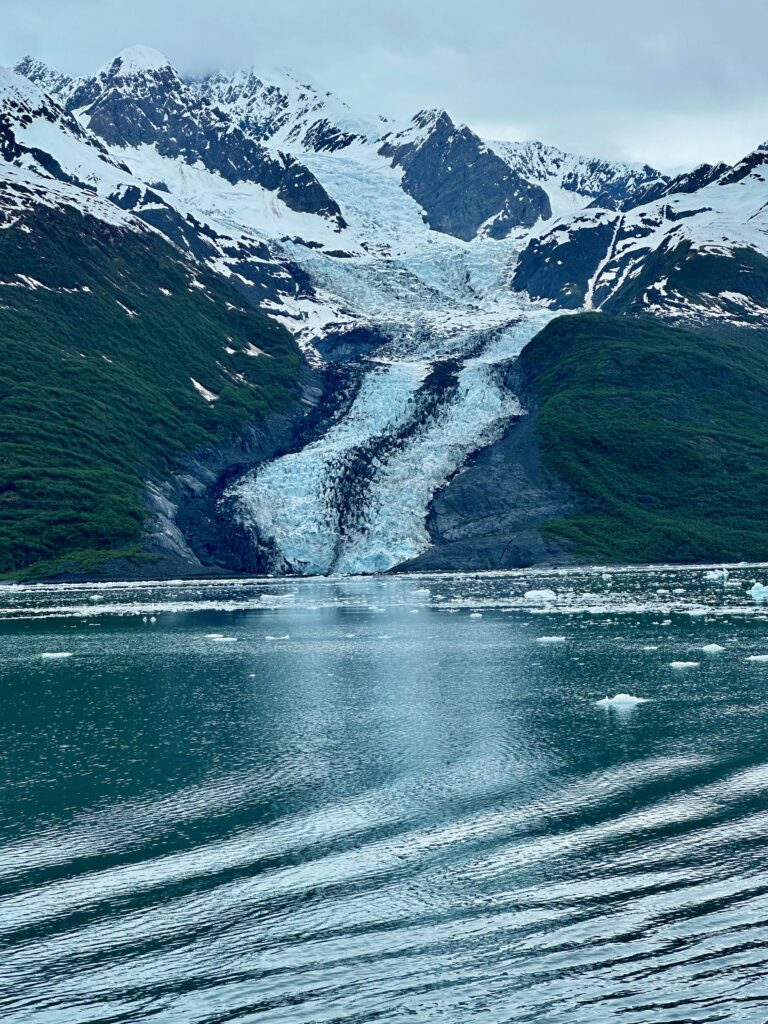
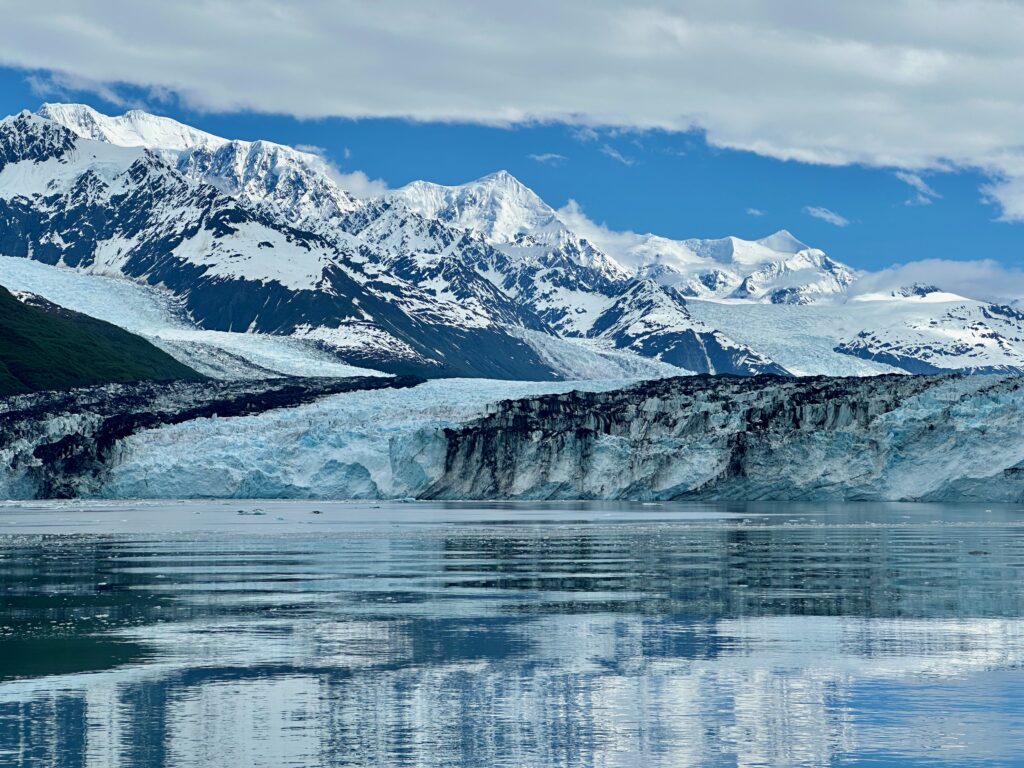
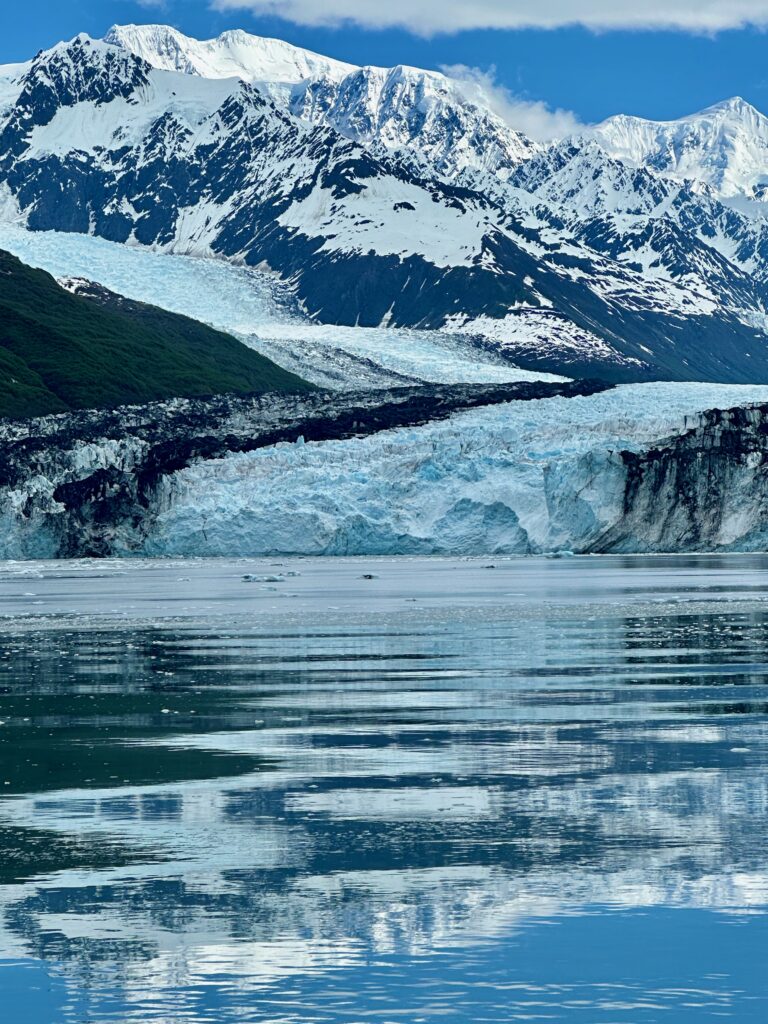
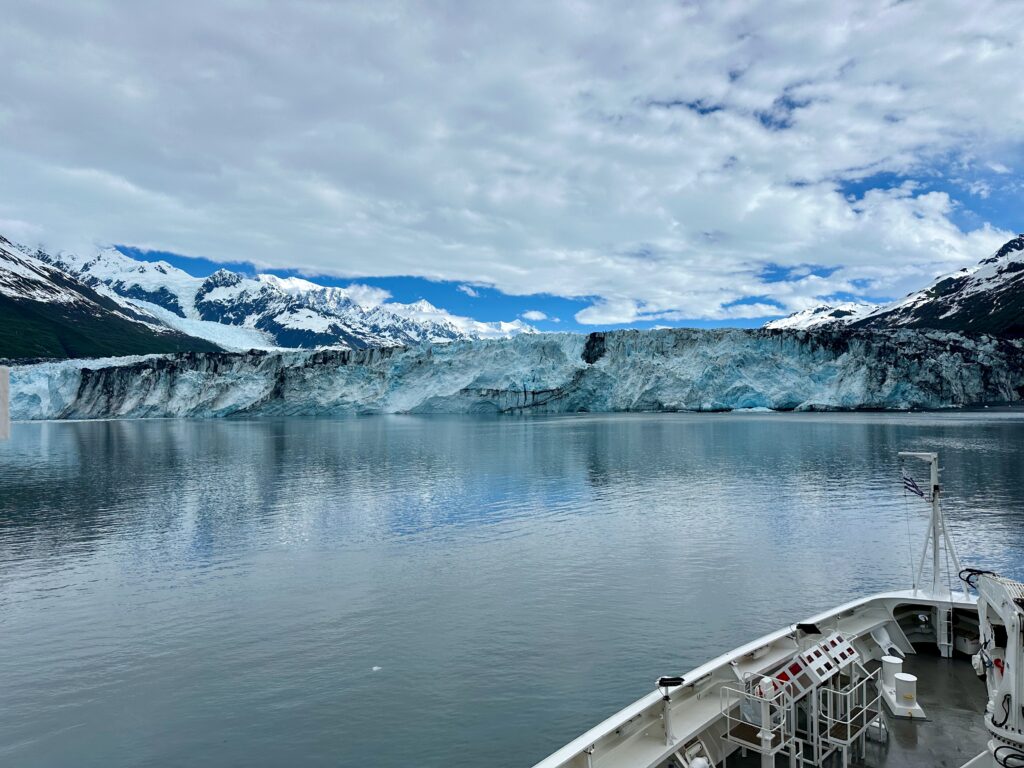
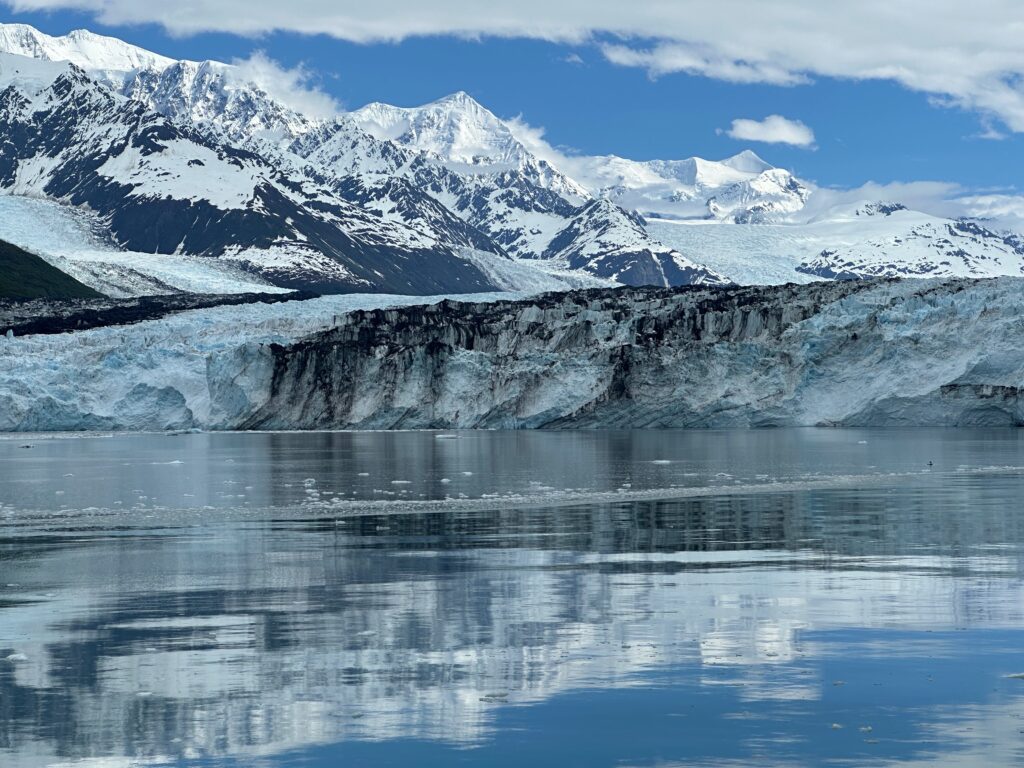
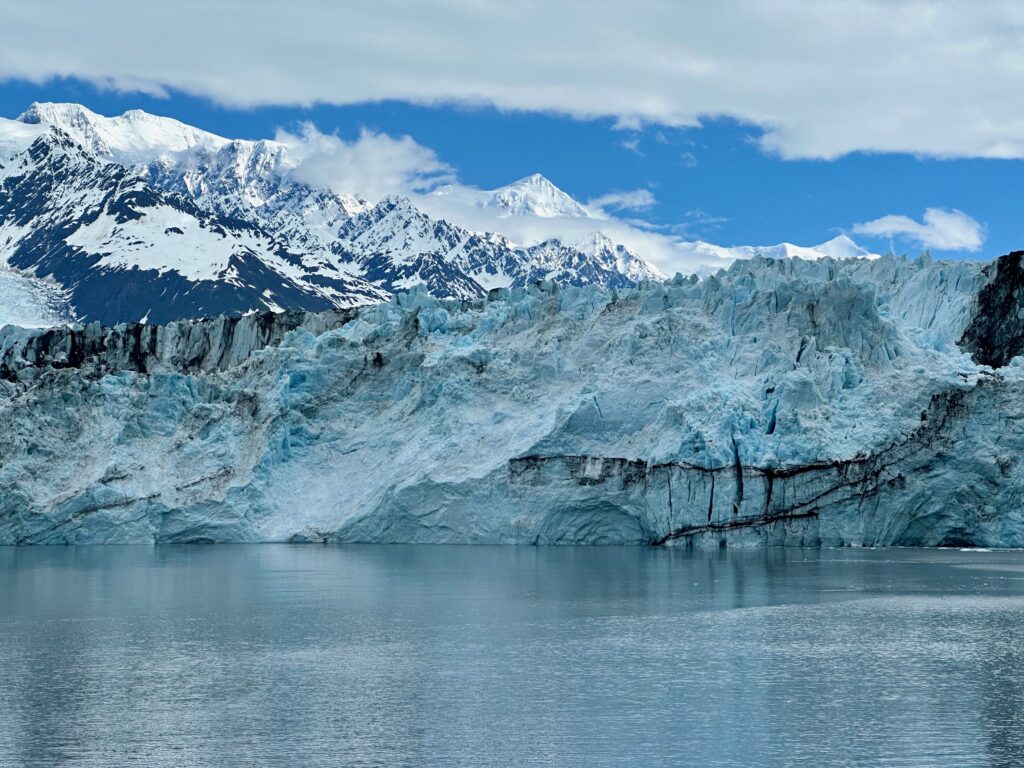
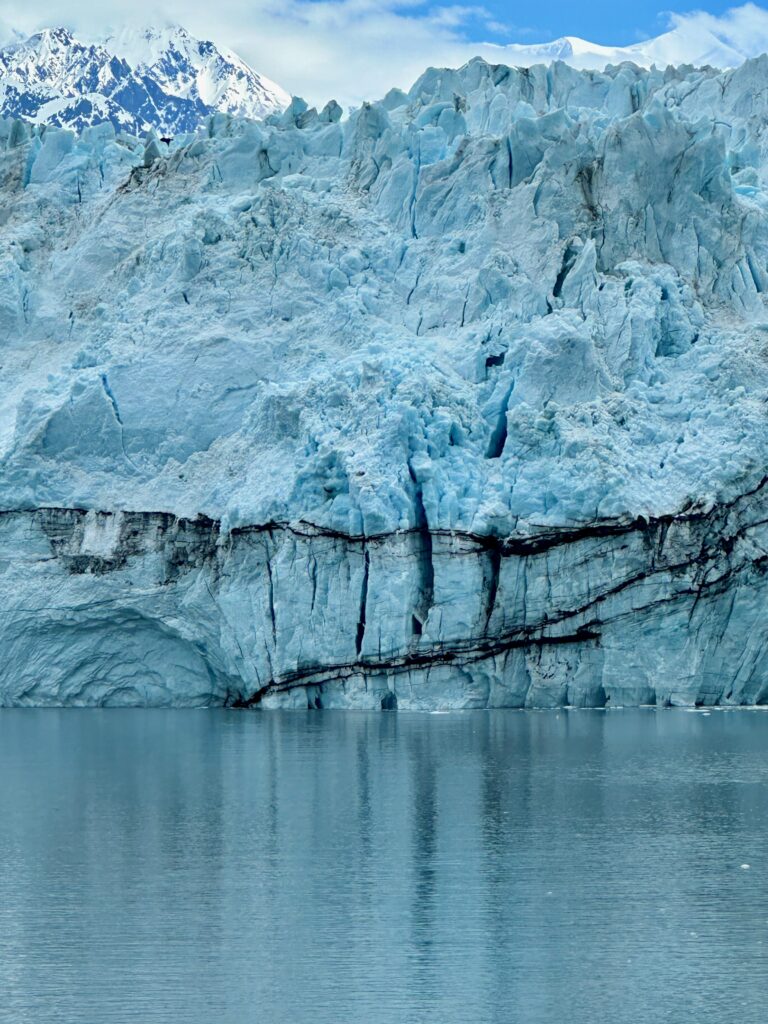
I had mussels with a view for lunch.
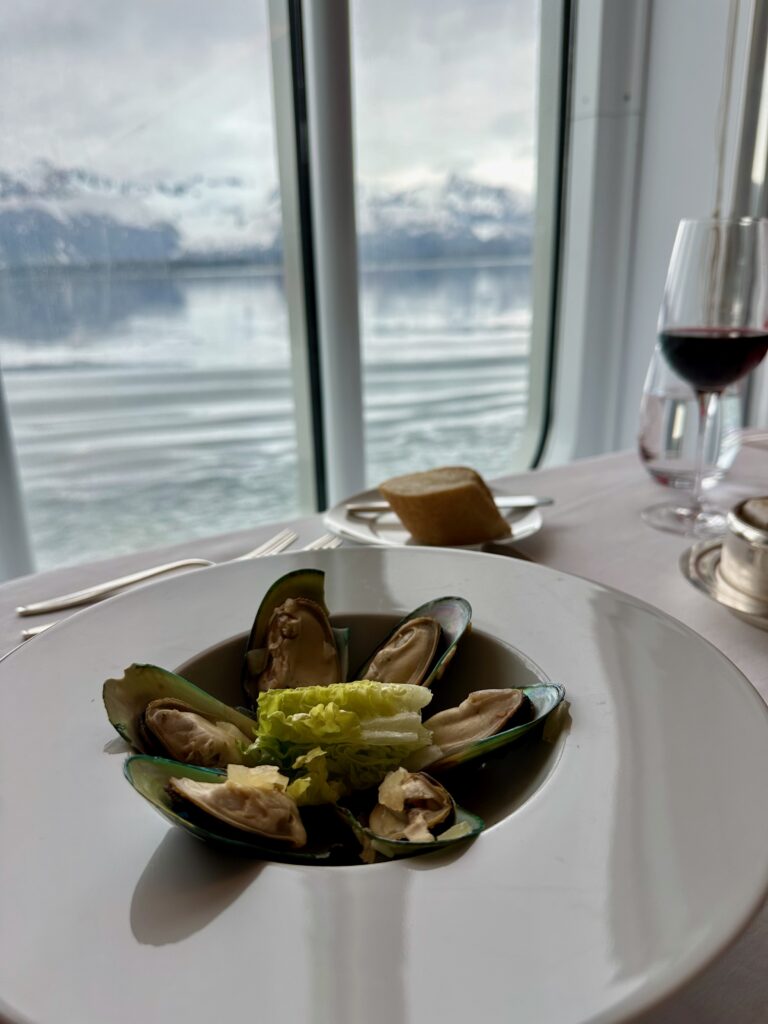
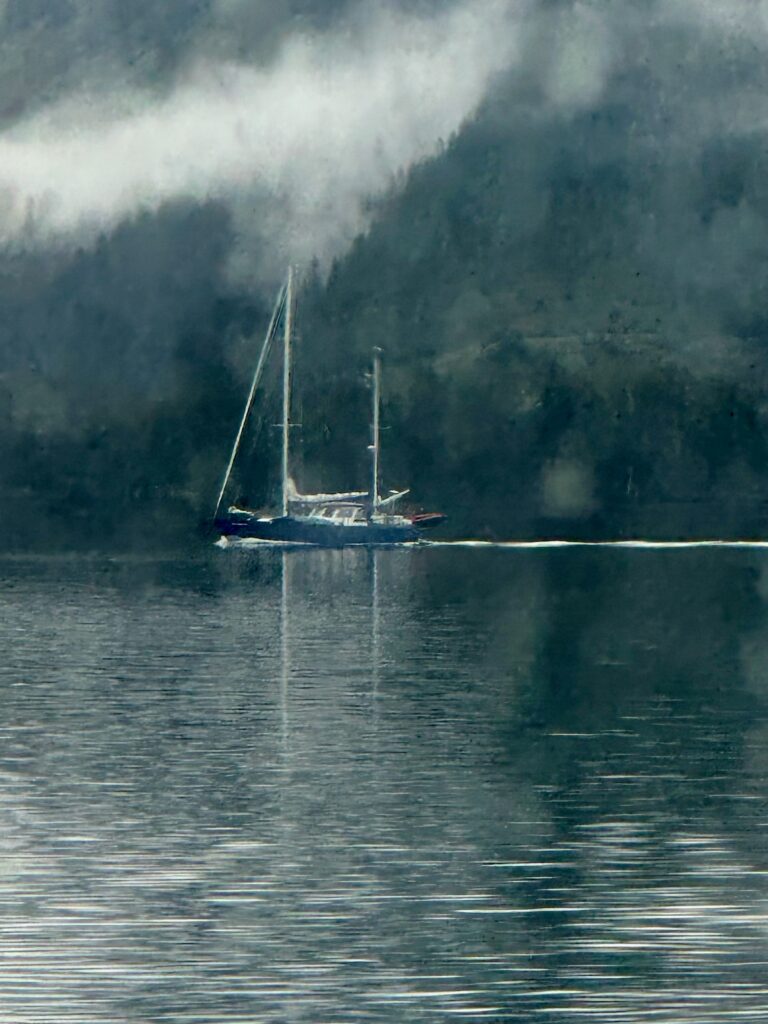
This is the team of exploration guides traveling with us to answer every question. Their backgrounds are diverse, some PhD trained scientists, others from education, and others life long travelers. I asked them how they came to this job, the best answer was, “I just continued to say yes to life.”
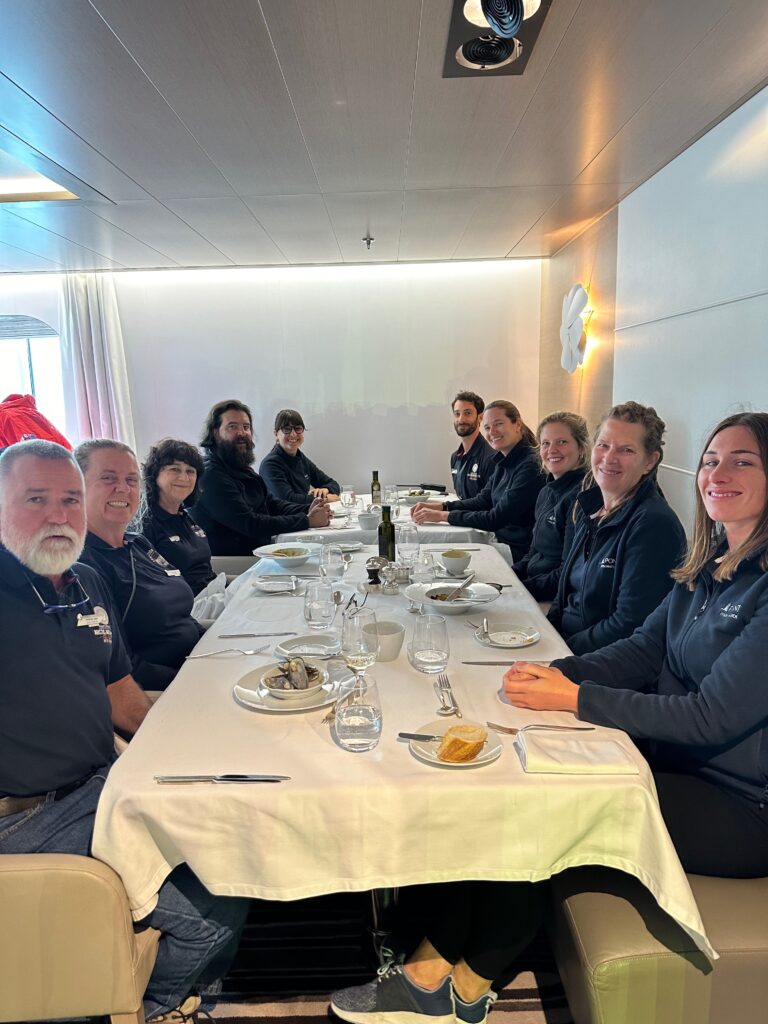
As we headed out back to the Gulf of Alaska I took this last shot. Seems nature is better at lighting than Steven Spielberg.
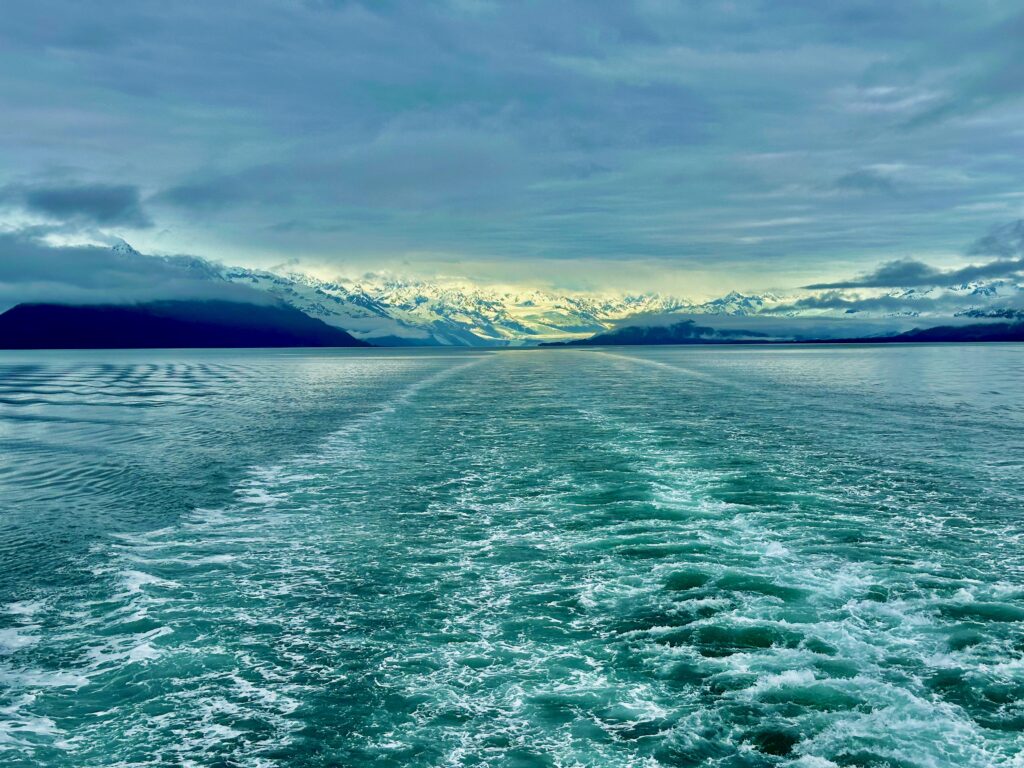
Takes your breath away!
Ahhhh….a day at glacial speed. What a wonderful vacation and I love the quote about saying “YES” to life.